2010 Subaru Outback - Click above for high-res image gallery
Even in the face of a bleak economy and dreadful auto sales, Subaru managed to have a breakout year in 2009. Products like the Forester and the Impreza helped Subaru achieve consistent year-over-year gains while the Japanese automaker continues to post stellar quality ratings through J.D. Power and Consumer Reports. And the accolades don't stop there. The new-for-2009 Forester was crowned the 2008 Motor Trend SUV of the year, and this year Subaru accomplished a surprise repeat taking the award for the second straight year with the 2010 Outback.
However, the new Outback isn't the capable, milquetoast lifted station wagon we've come to know and respect over the years. It's now bigger. Quite a bit bigger, performing a similar wagon-to-crossover transformation that the Forester pulled off a year earlier. Granted, the Outback is only two inches taller and wider, and a mere three inches longer between the wheels, but the result is a wagon that looks much larger than the model it replaces. We've come to expect that kind of growth in a world of constant size and weight one-upping, but we had to wonder – has increased functionality come at the expense of entertainment once again? We snagged a six-cylinder Outback to find out.
Photos by Chris Shunk / Copyright ©2009 Weblogs, Inc.
In 3.6R Limited trim, the story starts with a great powertrain and gets better from there. Subaru's 3.6-liter boxer six-cylinder pumps out a worthy 256 horsepower and 247 pound-feet of torque. This admittedly doesn't sound all that spectacular when 269-hp Toyota RAV4s and 290-hp Buick Enclaves roam the landscape. But the boxer six feels beefier than the sum of its numbers primarily because power delivery is so fluid and consistent. The engine is mated to a five-speed automatic that plays well with its six-pot partner, and while Subaru provides paddle shifters to row your own gears, the smooth, well-timed cogswaps of the auto 'box negates the need.
Despite its upgraded proportions, Subaru engineers worked hard to keep weight down. Our loaded Outback 3.6R Limited tester weighed in at just over 3,600 pounds – some 400 pounds lighter than a comparably equipped Toyota Venza with all-wheel drive, one of the Outback's main competitors. Subaru was able to keep the pounds down through the use of high strength steel, making the structure both safer and lighter than a more rotund CUV. The Outback's relatively restrained tonnage helps the boxer six feel that much more potent when pushed, and the weight reduction pays dividends in the braking department, allowing the Outback to be halted with minimal fuss on wet or dry pavement.
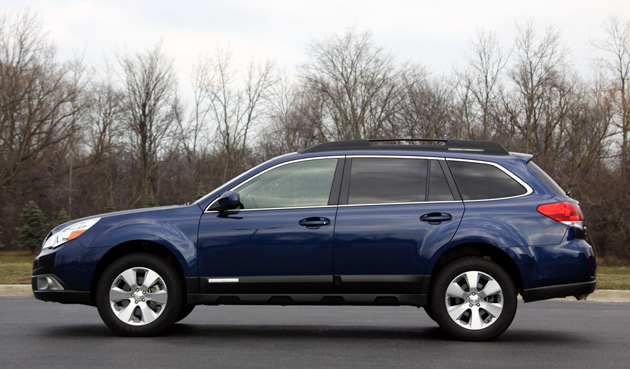
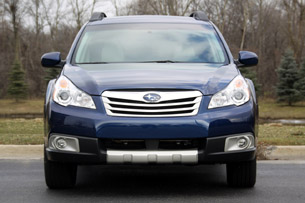
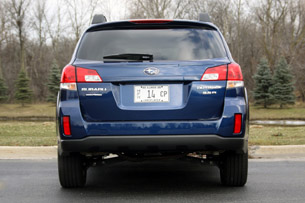
But while the 3.6-liter boxer is good, it's the symmetrical all-wheel drive that wins the day. We put the Outback through its paces on dry pavement, through a torrential downpour and some muddy terrain and were always well within the limits of adhesion. In fact, the Outback's seemingly never-ending traction begged us to drive harder and faster as the week wore on. How hard? Over the course of the first two days, we averaged a relatively robust 23.8 mpg in mixed driving and by the end of the week our relentless flogging dropped that figure down to just over 20 mpg – still laudable considering we spent a lot of time with the long pedal pegged to the floor.
And thanks to the Outback's reasonable weight and excellent AWD, this Subaru feels closer to a sports sedan than a 63-inch tall wagon. Aggressive cornering is a snap, with minimal body roll and the aformentioned constant supply of traction. And the Outback doesn't just feel car-like in turns. It may have a best-in-class 8.7 inches of ground clearance and surprising off-road chops, but on the highway, this tall wagon transforms into a sophisticated cruiser. While the occasional bump found its way into the cabin, the intrusions were far from jarring and the firm steering provided ample feedback whether pointed straight or winding our way through the bends. But while it's hard to find significant fault with the Outback's power and handling, our red pen finally gets some use when discussing the Outback's interior.
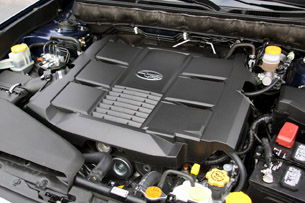
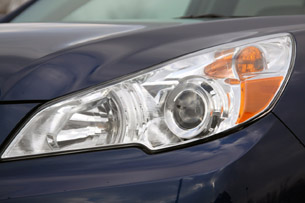
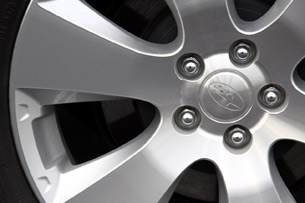
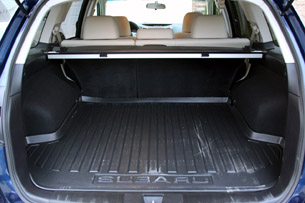
Any family-friendly wagon needs a warm and inviting cabin that's configurable enough to meet the needs of large clans and empty-nesters alike. Subaru gets the job done, for the most part, with great leather-clad front seats with sufficient support and bolstering, back seats that fold flat in a cinch and an easily read instrument panel. And lucky for us, the best seat has been reserved or the driver. The steering wheel is meaty and pleasing to the touch and we had little trouble figuring out the navigation system or HVAC controls. However, we were disappointed that the only way to change radio stations was via the LCD screen or on the steering wheel. To make matters worse, you have to push the radio tuner knob to display the stations. Not particularly intuitive, and with no redundant control buttons on the center stack and a somewhat confusing array of buttons on the steering wheel, things aren't exactly WYSIWYG.
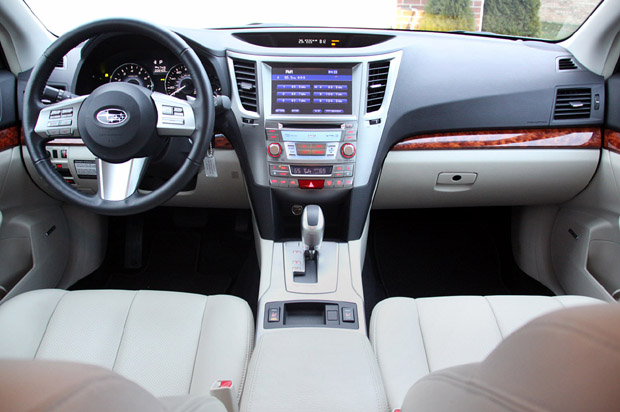
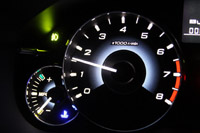
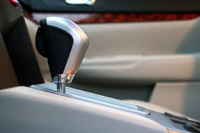
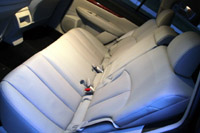
But as far as accommodations are concerned, rear seat passengers should be pleased with their surroundings, and the Subie easily swallowed a 46-inch LCD TV with the second row stowed. We were a little confused on how to operate the rear middle safety belt, but after a few minutes of searching, we found the belt tucked into the roof of the Outback's cargo area. The center passenger needs two latches as well; one secures the shoulder belt and the other secures the attached lap belt. This odd contraption is less than desirable because even a ten-year-old couldn't secure the belt without assistance – and the presence of two belt fasteners means rear seat occupants have to make due with a little less hip room. There has to be an easier way – and there is in nearly every other CUV on sale.
Although Subaru has picked up its game in many areas, the Japanese automaker still struggles with the quality of its interior materials, and the Outback is no different. While the seats are stitched up in a relatively high quality leather, dash materials are hard plastic and the center stack feels a bit bargain basement. We know that our tester was a nearly full-boat example, but when you pay $34,685 for a crossover, we expect somewhat nicer instrument panel materials than what the Outback offers.
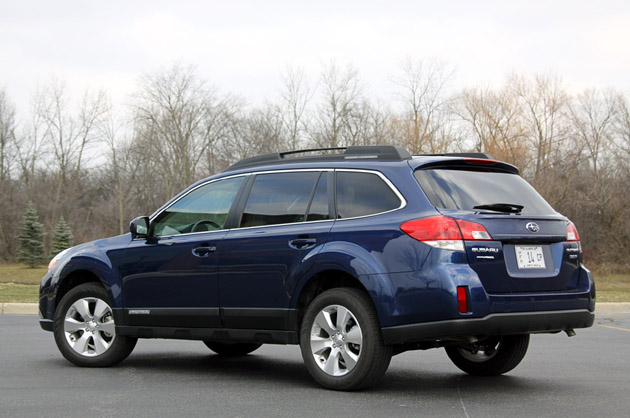
Subaru makes some... interesting looking vehicles. Or homely, depending on your perspective. That said, we thought our Outback, while far from the beauty queen, looked good in blue, with its subdued 17-inch alloys providing just enough visual spark. Its up-sized proportions play out well in the sheetmetal and the more sophisticated front end shows that Subaru is learning from past mistakes (see: Impreza, Tribeca), though it still has a ways to go. Plastic cladding is still present all around, but for 2010 the look is far less agrarian and the two-tone theme is finally muted compared to its immediate predecessor.
Subaru has managed to combine a superb engine, capable AWD, impressive handling, capacious interior and improved looks into a functional, family-friendly package. What's more, it's created a psuedo-CUV that encourages you to enjoy the journey. There's something undeniably rewarding about a vehicle that pushes you to drive more, do more and have more fun. The Outback just has that kind of moxie. One minute, you're slogging along on the daily commute and the next, you're looking for a 50-acre sandbox to play with your pet boxer. That's an attribute few crossovers (big or small) can manage, and further proof that Subaru's recent good fortunes aren't likely to stop anytime soon.
Photos by Chris Shunk / Copyright ©2009 Weblogs, Inc.

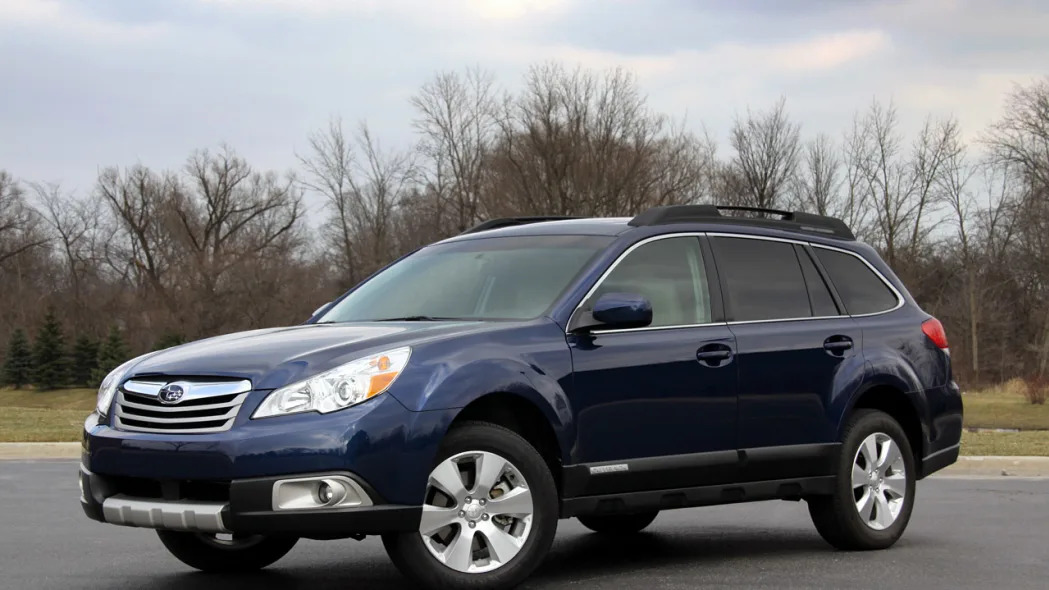

Sign in to post
Please sign in to leave a comment.
Continue